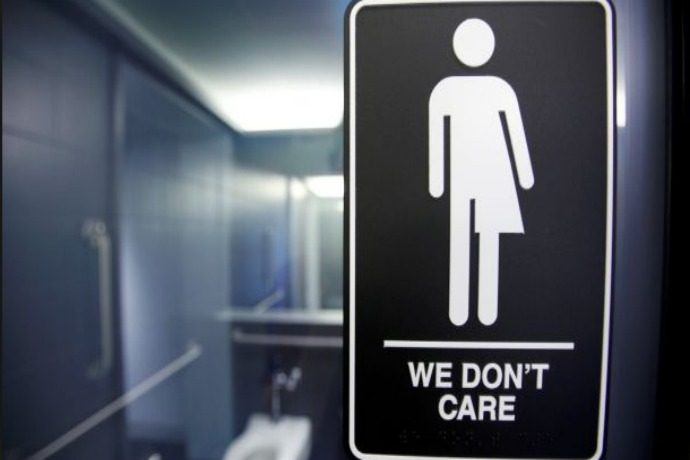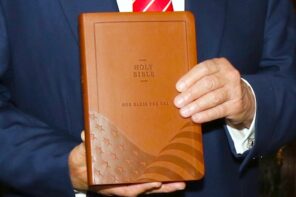In a recent New York Times article provocatively titled “Is God Transgender?” Rabbi Mark Sameth offers modern readers of the Bible a tantalizing vision of the past. The ancient authors of the Bible, he argues, lived in a cultural milieu in which gender fluidity was a mark of civilization. According to Sameth, the Bible intentionally reflects this environment by depicting gender-variant human characters and a god who is dual-gendered.
As queer Jews who, like Sameth, have trans* people we love and care for in our lives, the two of us appreciate Sameth’s impulse to try to locate spaces within Jewish tradition inclusive of a variety of non-binary genders. But as biblical scholars, we know that the vision he offers rests on faulty methodology and an inaccurate reconstruction of ancient Near Eastern history.
Concerning methodology, Sameth conflates two very different things. These are, in the words of theologian Krister Stendahl: what the Bible meant and what the Bible means.
Over the last few centuries, biblical scholars have developed methodological tools for better understanding the authors of the Bible and their world. On the other hand, the rabbinic tradition has developed and refined its own methodological toolkit over the past two millennia as Jews have continuously renegotiated their relationships to the text in each generation. What the Bible means in modern communities is often very different from what the Bible meant in its historical context, and rabbis and scholars have different tasks in uncovering and producing these meanings.
There is, however, a slippery area where these two methods overlap, and in order to use them in combination, we have to be careful about what we are asking each method to do. Sameth’s mistake is that he asks his rabbinic methods to make a claim about the historical community of ancient Israelites that sharply contradicts scholarly consensus.
For example, Sameth cites several biblical passages that he claims demonstrate that ancient Israelites had “a highly elastic view of gender.” In his discussion of one such text, Genesis 3:12, Sameth claims that “Eve is referred to as ‘he.’” Working from the rabbinic assumption that every single letter in the Hebrew Bible was placed there purposefully and therefore contains a universe of meanings, he asserts that this is not a typo, and then concludes that the historical ancient Israelites must therefore have prized gender fluidity. He is using a rabbinic method to make a historical claim about constructions of gender in ancient Israel.
However, using methods like philology, text criticism, and historical Hebrew linguistics, biblical scholars claim, in essence, that the word for “he” in this case (and others like it) is a typo. No historical claim, therefore, can be made about Israel’s conception of gender on the basis of this version of the text because no Israelite ever purposefully wrote this version of the text—it got here accidentally. Maintaining the assumption that there are no typos in the Bible is a fair starting point for rabbinic argument, but Sameth should use that assumption to make interpretations that allow Jewish communities to hold a more expansive views of gender instead of using it to reconstruct the past.
Equally problematic is Sameth’s depiction of ancient Near Eastern societies as cultures that prized gender fluidity rather than a binary. In fact, what we know of these different cultures indicates that they did, for the most part, systematize gender as binary. For example, birth rituals from ancient Mesopotamia assign a baby’s gender to either male or female by touching the infant to an object symbolizing either masculinity (often a weapon such as a bow or sword) or femininity (such as a spindle).
There was, of course, some flexibility concerning one’s position in the binary. Sameth cites one of them in the person of Hatshepsut, a woman who wore a false beard and assumed the role of her husband, the Pharaoh, following his death. Legal texts in which fathers adopt their daughters as “sons” in order to leave them an inheritance likewise attest to the legal fictions that could sometimes give women access to privilege reserved for men. Perhaps a more fitting phenomenon Sameth might have explored is the well-recorded presence of eunuchs, who did not fit neatly into the category of either male or female and often served important roles in royal courts. However, ancient attitudes regarding eunuchs were highly ambivalent, and, because of their transgressive gender, they were often excluded from other areas of society. None of these examples speaks to what we think of as gender identity today. They have more to do with changing one’s status to serve a social function.
Why does any of this matter? In order to build communities and theologies that are affirming and inclusive of queer and trans* people, we must proceed with integrity. Otherwise, if our efforts are based on bad scholarship, they are easily dismissed and thus fail to further the efforts toward trans* inclusion (see, for example, Robert A.J. Gagnon’s transphobic response in First Things). The argument for a trans*-inclusive Jewish tradition is also troubling because it’s dependent on misrepresenting (ancient) people, a bad practice for those of us who truly want to be allies to modern trans* and gender-nonconforming people. We fail to honor the Bible and its authors—or their ancient neighbors—in all of their complexity when we falsely present them as full supporters of our modern agendas.
If we really want to fight for trans* inclusion in our religious communities, we have to do it in a way that does justice to the texts and methods we have inherited. As biblical scholars, we know there are ways to use the Bible for this project, and as queer Jews who are in trans* inclusive communities, we know there are amazing thinkers doing it well. Here are some of our favorites:
Torah Queeries: Weekly Commentaries on the Hebrew Bible
Bible Trouble: Queer Reading at the Boundaries of Biblical Scholarship





